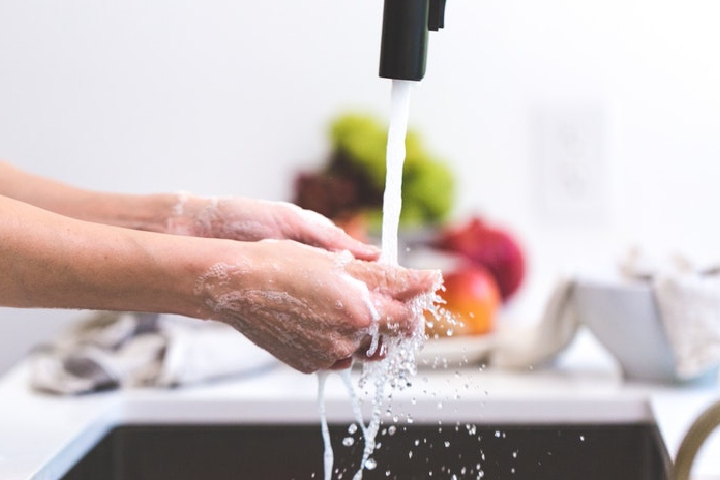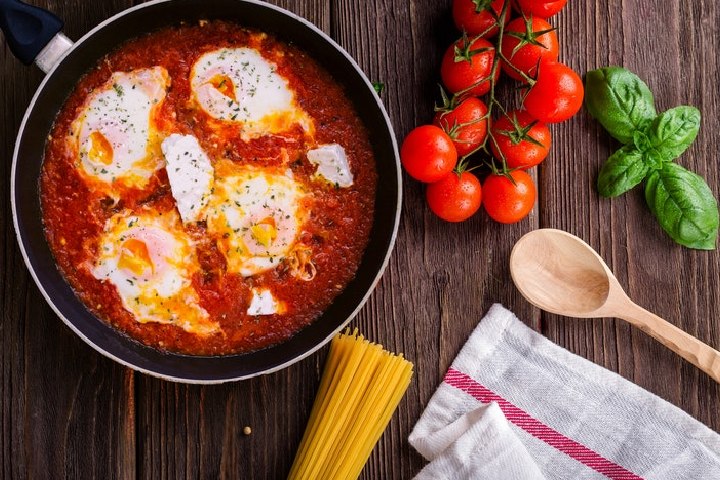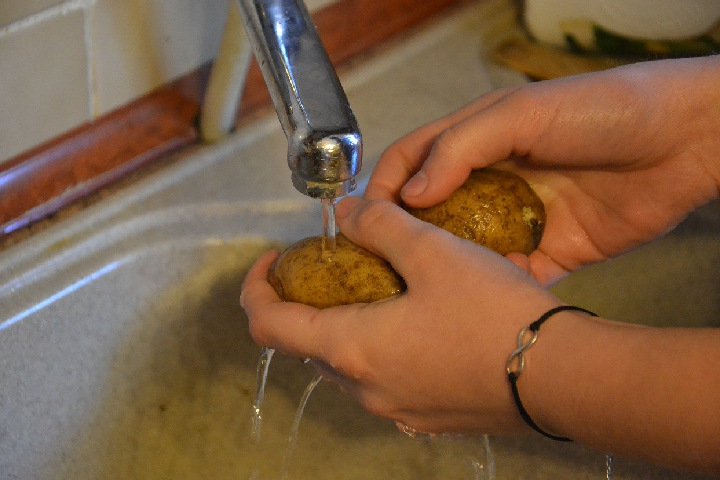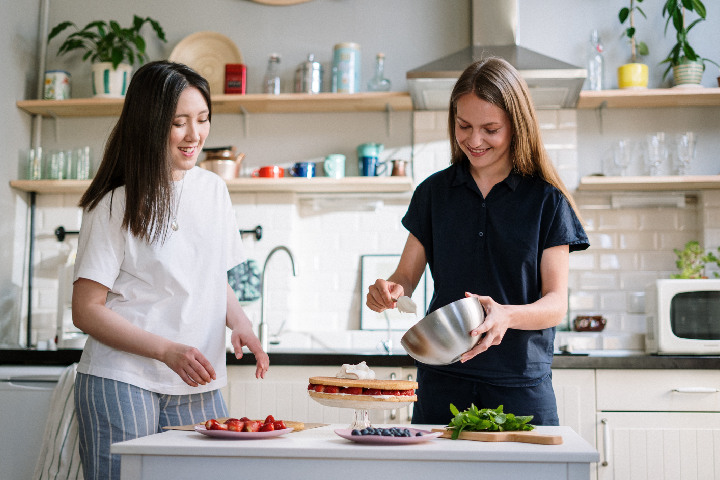Food Poisoning: After a while, after eating, you start to feel bad, and gastroenteritis appears that leaves you “out of the game” for a few days.
Food poisoning is often unexpected, but the good news is that you can prevent it with a few simple habits.
Pathogenic microorganisms or toxins. Those elements can be “extra” in food and cause us from mild gastrointestinal discomfort to colitis or even kidney damage.
Food Poisoning symptoms are usually abdominal pain, vomiting and diarrhoea, and sometimes fever. As the nutritionist tells us, we must remain vigilant because, if it is not just a low-grade fever, these food poisoning symptoms may warn of a severe disorder caused by some contaminated food.
Table of Contents
1. Avoid the Dispersion of Bacteria
High humidity and high temperatures favour the rapid growth of microorganisms that cause food poisoning, which, according to statistics, occurs most of the time at home.
Remember that contaminated food does not always look bad, so it is essential to implement prevention measures.

First of all, clean hands. It is the previous step so that a bacterium already present does not spread. Do it before and after handling food, and every time you change tasks, 20 seconds with warm soapy water, insisting on the folds.
And remember to protect against any cuts. Watch out for cross-contamination. Pamper, all your work surfaces as the contaminated remains of food can remain there and pass to another product that you place in the same place.
A contaminated food “infects” another that you place in the same place.
Tables: better to have several. Clean and disinfect them after preparing each food, especially if it has indentations from the knife cuts.
Do it like this: sprinkle it with baking soda and rub it with a cloth soaked in lemon juice. Then rinse well.
Kitchen towels: wash and hang fast. Wash the cloths frequently at high temperatures (over 60º). Put them to dry quickly to avoid the multiplication of any microorganisms present in them.
The scourers change them often as they are an ideal habitat for germs: there, they find moisture, heat, and food debris.
If you use a blender, food processor, juicer, disassembles it and wash thoroughly, especially the rubber gaskets.
2. Where Germs Hide
Some are already present when buying food because they ‘live’ in the intestines of individual animals (poultry, veal, pork, crustaceans …); others reproduce in your kitchen due to improper handling.
Undercooked meats: may contain E.coli, Salmonella, or Campylobacter. It would help if you kept them at -5º until cooked and cook them at over 65º.
Damaged preserves: If the can is bulging or bruised, it may contain the bacteria Clostridium botulinum. Discard it, and better not make homemade preserves in summer.
Other microorganisms: Escherichia coli ‘colonizes’ fruits and vegetables, and your nose may contain Staphylococcus aureus. Eye when sneezing.
Viruses: they cannot multiply in food, but they do have high infectious power. If they are present, in any quantity, they can cause disease.
Bacteria: if the food is in the refrigerator (between 0 and 4º), they are inactivated. Outside the fridge, in just 20 minutes, they have multiplied by 2.

The Egg, a Particular Case
Any preparation with raw or poorly cooked eggs can cause salmonellosis. If it occurs, the symptoms do not usually last more than 7 days, but they can be severe in specific cases.
- Buy the eggs with the shell clean.
- Please do not wash them until you are not going to use them.
- Set the tortillas well.
- Don’t use the peel to separate the yolk.
- Do not crush it in the bowl where you are going to beat them.
- If you don’t eat it right away, store it in the fridge until use.
3. More Tips to Eat Safely
Do not make large purchases to avoid storing fresh produce. For example, in meat, it is recommended that you consume it within two or three days of buying it.
During the purchase, carry meat, poultry, and fish in isothermal bags to separate them from the food.
Choose the meat trays that do not contain liquid, but if you buy it with him, put it in a smaller bag to not come into contact with the rest of the meat and fish. Please do not take more than half an hour to get home.
That is enough time for any microorganisms present to reproduce and increase the risk of contamination, making it more challenging to eliminate them during cooking.
Use insulated bags to do the shopping and put food away immediately when you get home.
Ask that the meat be minced at the moment since if it is already diced, the chances of containing bacteria are higher since the surface in contact with the outside is more significant (and more porous).
If it is not possible and you buy it already chopped, choose the one kept wrapped in plastic.
When you get home, keep the food immediately in covered containers and separate the raw from those already cooked.
In the refrigerator, the optimum temperature for refrigeration is between 0º and 5º. It is convenient not to overload it (it would be challenging to maintain the correct temperature) and place the food separate from each other not to touch the back wall.
Put meat and fish at the bottom so, if they drip, they will not impregnate any product.
4. Preparation is Important
There are products that you must wash thoroughly to eliminate or reduce their possible bacterial load; others, on the other hand, should not be put under the tap.
Vegetables: It is preferable to remove the outer leaves of the lettuce and green leafy vegetables (which are those that have come into contact with the ground and may contain more bacteria), then separate the rest of the leaves and leave them in water with a few drops of vinegar about 20 minutes.
Sometimes washing food causes bacteria to spread.
Meats: Do not wash them before cooking: if they contain bacteria, they will spread throughout the flesh or kitchen.
Kitchen utensils: Clean them thoroughly not only before and after use but also when you handle another product.

5. Guidelines to Follow During Cooking
Remember to fry, bake, or boil any food above 70º to reduce risks. Follow this rule, especially with meats. Keep in mind that maintaining that temperature for at least 10 minutes will destroy many of the bacteria that could be in fresh food.
And whenever the grain allows it, cook it at 80º or 100º to make sure that you finish with them and there are no risks.
Cook food, especially meat, above 70º to destroy bacteria
Consume it right away once done because if there is any microorganism left, in half an hour, it has increased. Remember that bacteria proliferate better and faster in humid environments and at high temperatures.
6. The Best Way to Freeze and Thaw
Microorganisms “dormant” by freezing can be activated by thawing food. Therefore, you have to be very careful with this process.
- Store them quickly to maintain the cold chain (you will preserve their nutritional and organoleptic quality, but you will also guarantee their safety).
- Frozen food should be kept at –18º until it is to be consumed.
- If you’re freezing fresh food, pack it in single-use, airtight plastic tins or bags first. Write down the date to control which products to consume first.
- Do not refreeze food that you have already thawed. That increases your risk of contamination.
- Thaw in the fridge – not out of it – and at the bottom, so it doesn’t drip onto other foods.

